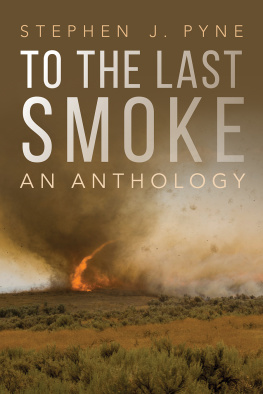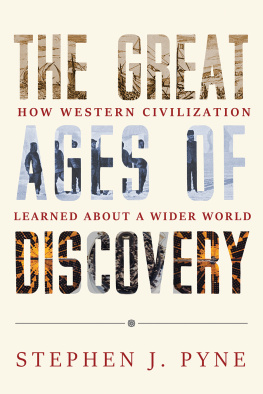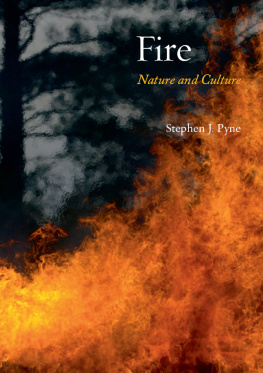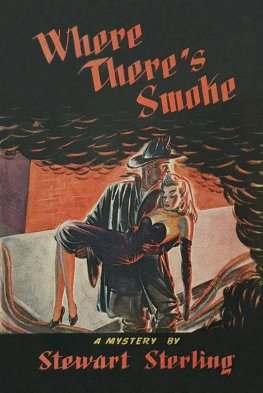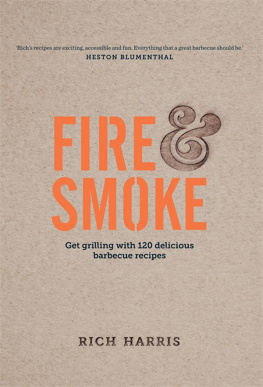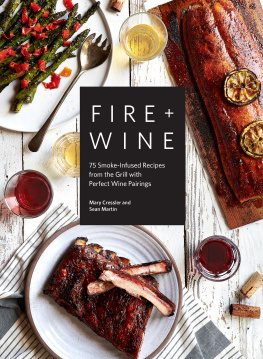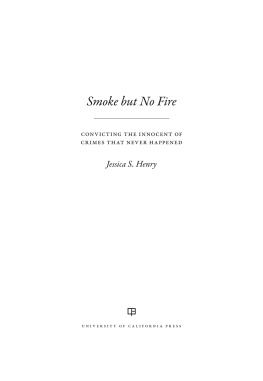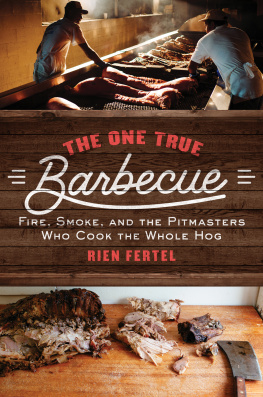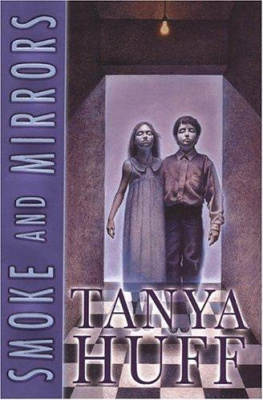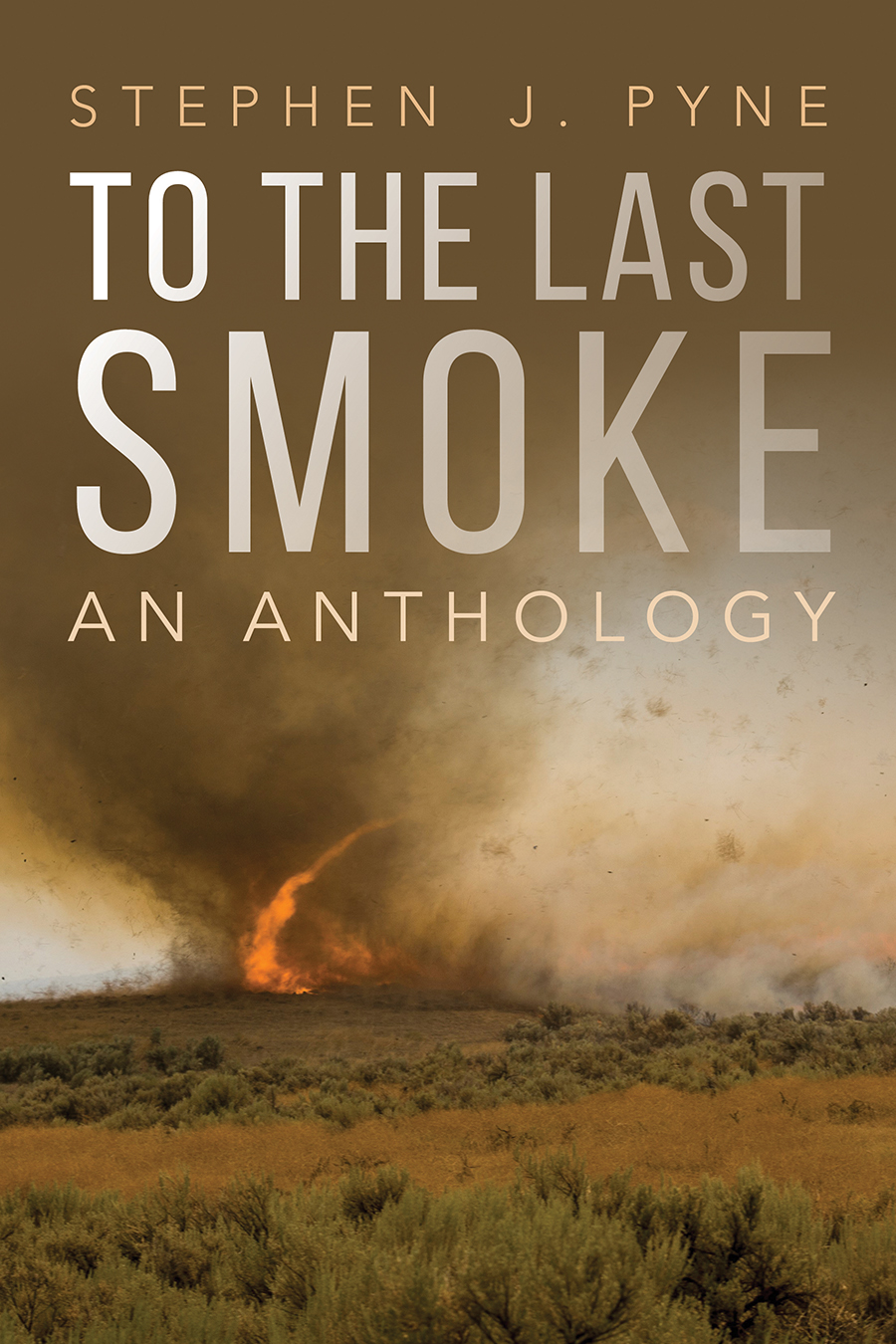
To the Last Smoke
To the Last Smoke
An Anthology
Stephen J. Pyne

The University of Arizona Press
www.uapress.arizona.edu
2020 by The Arizona Board of Regents
All rights reserved. Published 2020
ISBN-13: 978-0-8165-4012-9 (paper)
Cover design by Leigh McDonald
Cover photo: West Cinder prescribed burn, Twin Falls BLM District, August 2010 by Kari Greer/BLM
Interior design & typesetting by Sara Thaxton
Typeset in Adobe Caslon Pro, Avenir LT Std, and Bebas Neue
Library of Congress Cataloging-in-Publication Data
Names: Pyne, Stephen J., 1949 author.
Title: To the last smoke : an anthology / Stephen J. Pyne.
Description: Tucson : University of Arizona Press, 2020. | Includes bibliographical references and index.
Identifiers: LCCN 2019052046 | ISBN 9780816540129 (paperback)
Subjects: LCSH: WildfiresUnited StatesHistory. | WildfiresUnited StatesPrevention and controlHistory. | Forest firesUnited StatesPrevention and controlHistory.
Classification: LCC SD421.3 .P964 2020 | DDC 634.9/6180973dc23
LC record available at https://lccn.loc.gov/2019052046
Printed in the United States of America
This paper meets the requirements of ANSI/NISO Z39.48-1992 (Permanence of Paper).
Contents
Authors Note
W hen I determined to write the recent fire history of America, I conceived the project in two voices. One was the narrative voice of a play-by-play announcer. Between Two Fires: A Fire History of Contemporary America would relate what happened, when, where, and to and by whom. Because of its scope it pivoted around ideas and institutions, and its major characters were fires or fire seasons. It viewed the American fire scene from the perspective of a surveillance satellite.
The other voice was that of a color commentator. I called it To the Last Smoke, and it would poke around in the pixels and polygons of particular practices, places, and persons. My original belief was that it would assume the form of an anthology of essays and would match the narrative play-by-play in bulk. But that didnt happen. Instead the essays proliferated and began to self-organize by regions. The upshot was a nine-volume suite of regional reconnaissances.
The advantage of this approach was that I could include many more places and I was able to frame each regional volume with essays about the regions traits and how it sat within the whole. The opening essay would explain what was characteristic and unique about each region; the closing essay, how to place it within the national narrative. The internal organization of the essays followed a logic that seemed appropriate to the identity of the region at hand. The American fire scene is both a federation of agencies and a confederation of regions. To the Last Smoke sought to convey that reality.
But my original intuition remained. Nine short volumes still added up to some 1,800 pages, a daunting mound of text for even the most ardent fire enthusiast. The argument for a single-volume sampler was compelling. To the Last Smoke: An Anthology is the result. It includes essays I liked and that speak with special power for each region, but it does not include the thematic frames. Those belong with the regional volumes and were not intended to stand alone. The one exception is a new essay on California that examines the 2017 and 2018 seasons. These occurred years after I wrote my California survey, but reviewers felt that the anthology presented an opportunity to address what seems an extraordinary outburst. I agreed, and This Time Is Different. Maybe is the result.
The essays reflect a light edit from those that appeared originally in the separate volumes of the series. Mostly these involve minor glitches of grammar or wording. Occasionally, it means deleting passages or sentences that effectively repeat text that appeared earlier. In the series this didnt matter because some recapitulation was warranted to reset the theme, and the volumes were separated. Gathered into a single book such overlaps can be annoying. This volume, too, dispenses with a note on sources. Those brief bibliographical essays were intended to buttress the regional volumes. For individual essays the endnotes seem ample.
The series title? I began my career as a smokechaser on the North Rim of Grand Canyon in 1967. That was the last year the National Park Service hewed to the 10 a.m. policy and we rookies were enjoined to stay with every fire until the last smoke was out. By the time the series appears, more than 50 years will have passed since that inaugural summer. I no longer fight fire; I long ago traded in my pulaski for a pencil. But I have continued to engage it with mind and heart, and this unique survey of regional pyrogeography is my way of staying with it to the end.
Funding for the project came from the U.S. Forest Service, Department of the Interior, and Joint Fire Science Program. Im grateful to them all for their support. The University of Arizona Press deserves praise as well as thanks for seeing the resulting texts into print. Thanks, too, to Kerry Smith, who copyedited the entire, now-10 volumes with care and good humor and spared me from my worst grammatical self.
To the Last Smoke
Florida
A Tale of Two Landscapes
H is career with the Army Corps of Topographic Engineers took Lieutenant Joseph Christmas Ives to two of the more intractable regions of the United States. In 185758 he led an expedition up the Colorado River to a rumored Big Caon. He believed the expedition would make him famous, and it did, but not least because he pronounced that his was the first and would doubtless be the last party of whites to visit this profitless locality, what the world would come to know as the Grand Canyon. The armys concern lay with possible supply routes to the so-called Utah War. What is often forgotten is that the redoubtable lieutenants previous assignment had taken him to the Big Prairie region that slashed across Florida north of Lake Okeechobee. It was a comparatively unknown region whose natural features oppose great obstacles to the prosecution of surveys and explorations. In brief, the place flooded seasonally. In this case the armys interest lay in pursuing the Seminoles south.
As transportation routes Ivess opinion of both sites was not far wrong. Their future, however, did not belong with passing armies and insurrectionists but with tourism. For the Canyon the scene was primarily geological. For the Big Prairie it was biological. Eventually the Grand Canyon became among the best-known units in the national park system. A patch of Big Prairie became the flagship unit of the Florida Park Service (FPS).
Historically, the region around the Myakka River boasted a typical Florida landscape, seasonally overflowing either with water or flame. The scene came with one enormous geographic anomaly, however, a large swathe of savanna pocked with wetlands, pine islands, and oak-palm hammocks and seasonally washed by flame, what was known as the Big Prairie and later as the Florida dry prairie. The area seemed so barren that early surveyors skimped on their markers in the belief that no one other than migratory hunters and ranchers would find enough value to visit the place routinely, and no one was likely to homestead. Unsurprisingly, settlement was slow, as it was throughout interior Florida. A few low-grade railways supported high-grade longleaf logging and scabby naval stores; the woods were too scattered and sparse for serious milling. Staked ruts for wagon trails marked routes of travel. Mostly, cattlemen ran cows and kept the landscape low and open through annual burning. By 1930 fewer than 39,000 people occupied the region now comprising Manatee, Sarasota, and Charlotte Counties, and nearly all resided on the coast. Lightning, transients, and ranchers burned most of the land on an annual or biennial rhythm.
Next page
